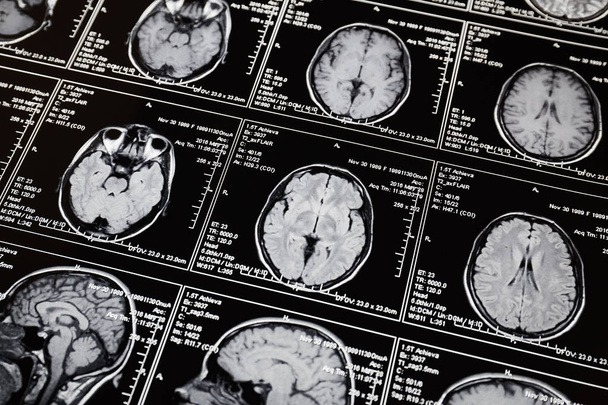
Neuroscience in Chronic Health: Uncovering the Brain’s Role in Disease Control
Chronic diseases, such as persistent pain, neurodegenerative diseases, and autoimmune disorders, are not mere physical remedies; they are deeply connected to the intricate networks of the brain. Recent advances in neuroscience have shed light on how the brain interacts with chronic diseases, highlighting the complex interplay between neural processes and physical health. By examining these connections, we can better understand how to prevent, manage, and potentially treat chronic diseases.
One of the most significant findings in health neuroscience is the brain’s dual role as both a driver and a responder of chronic health problems. Studies reveal that the brain’s regulatory functions, particularly those involving cognition and emotional control, greatly influence behaviors that determine long-term health outcomes. For example, neural circuits governing stress responses can affect susceptibility to diseases such as hypertension or diabetes. Chronic stress, if left unchecked, leads to elevated cortisol levels, which damage neurons in the hippocampus, an area critical for memory and emotional regulation. This underscores the importance of not only treating physical symptoms but also addressing mental health factors as part of chronic disease prevention and care (Erickson et al., 2018).
A prime example of the brain’s role in chronic disease is chronic pain. Unlike acute pain, chronic pain alters the brain’s neural architecture. Neuroplasticity (the brain’s ability to reorganize itself) plays a double-edged role here. While it allows the brain to adapt and learn, it can also reinforce pain pathways, making the condition self-perpetuating. Research on conditions such as fibromyalgia shows how mindfulness-based techniques and cognitive behavioral therapy can rewire these pain circuits, offering relief by restoring altered brain functions. These findings highlight the potential for noninvasive interventions to complement traditional pain management strategies (Martucci and Mackey, 2018).
Equally important is the connection between chronic inflammation and brain health. Persistent inflammation, common in conditions such as rheumatoid arthritis or heart disease, has been shown to accelerate cognitive decline. Elevated levels of inflammatory markers, such as C-reactive protein, are now recognized as early warning signs of diseases such as Alzheimer's. Neuroscientists are exploring therapies aimed at controlling inflammation to preserve cognitive function, highlighting the need for a preventative approach to brain health. These discoveries challenge the traditional divide between "mental" and "physical" diseases, and reinforce the idea that the brain and body should be treated as an integrated system (Kivimäki et al., 2024).
Another pillar of neuroscience in chronic health is exercise. Far from being a simple lifestyle recommendation, exercise has profound neuroprotective effects. Physical activity stimulates the production of brain-derived neurotrophic factor (BDNF), a protein that supports the growth and survival of neurons. This not only improves cognitive functions such as memory, but also slows the progression of neurodegenerative diseases. Furthermore, exercise promotes neurogenesis (the creation of new neurons), which offsets the harmful effects of chronic diseases on the brain. In essence, movement acts as medicine for the mind (Reyzelman and Glover, 2025).
The relationship between mental and physical health is perhaps most evident in disorders such as functional neurological disorder (FND), in which patients present with neurological symptoms (such as seizures or paralysis) without a clear physical cause. This highlights the need for a holistic approach to treating chronic diseases. Treatments that combine cognitive therapies with physical rehabilitation have shown promise in addressing the root causes of such conditions. These integrated strategies underscore a paradigm shift in medical practice, in which the brain is no longer considered a passive organ but an active player in health and disease (Nord, 2025).
In conclusion, neuroscience has revolutionized our understanding of chronic diseases by revealing the central role of the brain in their development, persistence, and resolution. Chronic diseases are not limited to the body; they are deeply linked to the brain’s function and structure. By leveraging insights into neuroplasticity, inflammation, and the mind-body connection, researchers and clinicians are developing innovative treatments that target both physical and mental dimensions of health. As we continue to connect these dots, it becomes clear that a comprehensive, brain-centered approach is essential for managing chronic diseases and improving quality of life.
References
Erickson, K. I., Leckie, R. L., & Weinstein, A. M. (2018). Neuroscience and health psychology: Bridging domains to advance health neuroscience. Psychosomatic Medicine, 80(9), 877–886. https://doi.org/10.1097/PSY.0000000000000621
Kivimäki, M., Luukkonen, R., Batty, G. D., Ferrie, J. E., Pentti, J., Shipley, M. J., Nyberg, S. T., Suominen, S. B., Toppila, I., Witte, D. R., Jokela, M., Sipilä, P. N., & Vahtera, J. (2024). Inflammation and cognitive function in midlife: Findings from a large prospective cohort study. Neurology, 102(2), 47-58. https://doi.org/10.1212/WNL.0000000000209613
Martucci, K. T., & Mackey, S. C. (2018). Neuroimaging of chronic pain: The changing face of pain. Neuroscientist, 24(6), 542–558. https://doi.org/10.1177/1073858418755355
Nord, C. (2025, January 26). The mind/body revolution: How the division between ‘mental’ and ‘physical’ illness fails us all. The Guardian. https://www.theguardian.com/society/2025/jan/26/the-mindbody-revolution-how-the-division-between-mental-and-physical-illness-fails-us-all
Reyzelman, M., & Glover, E. (2025, January 21). Why exercise is so good for your brain, according to doctors. EatingWell. https://www.eatingwell.com/why-exercise-is-good-for-your-brain-8778043
Post a comment